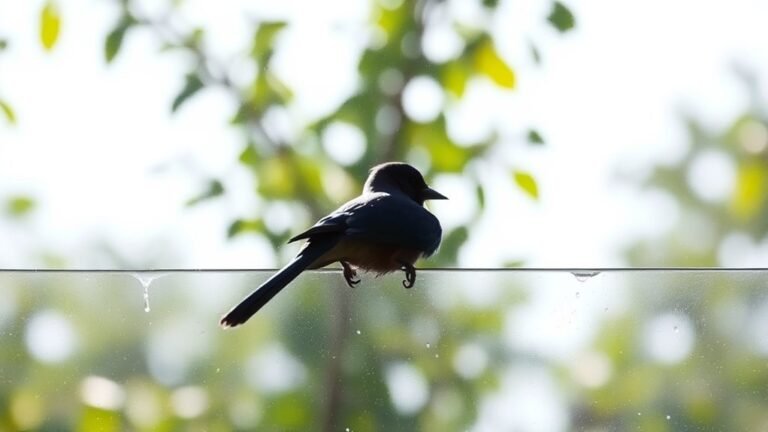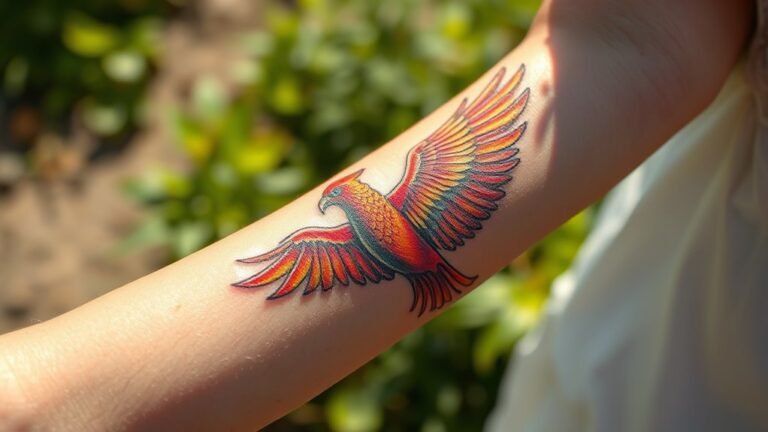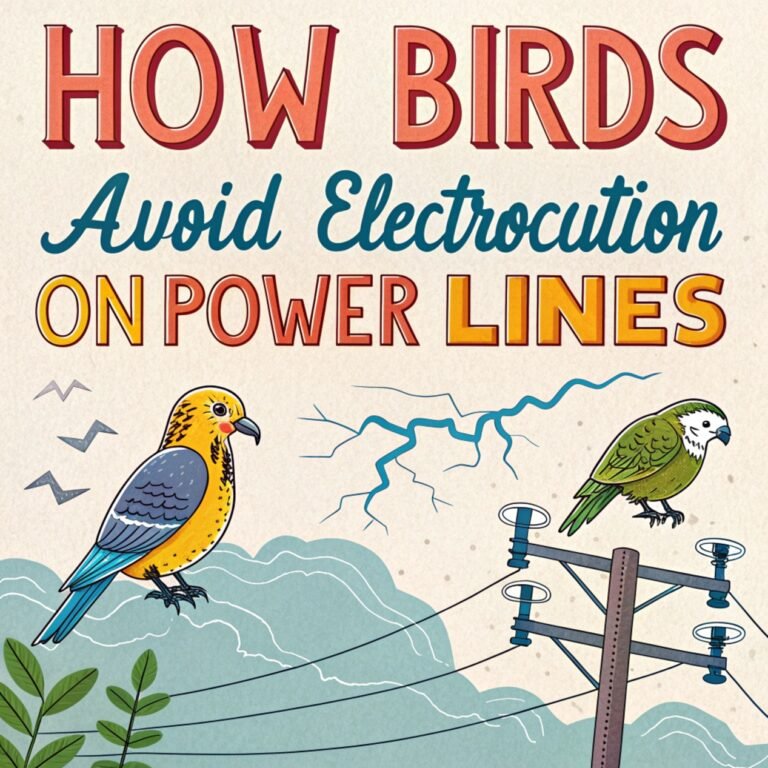Understanding the Implications of Birds Hitting Windows
Birds often collide with windows. Every year, millions of birds die from these crashes. This problem arises from urban development and certain architectural styles. To address this issue, we must look at how birds behave and see. Understanding these factors can help us create safer spaces for birds. These collisions affect not just individual birds, but also the balance of ecosystems.
What can we do to reduce these incidents? Simple solutions include using window films or screens, adding decals or markings to windows, and designing buildings with bird safety in mind. By making these changes, we can help protect birds and maintain healthy environments.
Key Takeaways
- Millions of birds die annually from window collisions, significantly impacting bird populations and ecosystems.
- Birds perceive reflections and bright lights as open spaces, increasing their risk of hitting glass.
- Urbanization and architectural trends prioritize aesthetics over wildlife safety, contributing to higher collision rates.
- Understanding bird vision can inform design choices that reduce window strikes and enhance bird safety.
- Implementing bird-friendly solutions, like window films and textured glass, can mitigate collision risks significantly.
The Scale of the Problem: Bird Collisions With Glass

Every year, millions of birds fly into glass surfaces, causing serious declines in their populations. Clear windows create an illusion of open space, tricking birds into thinking they can fly through. Reflective surfaces worsen this problem by mirroring the surrounding environment, leading to more collisions.
Research shows that in the United States, up to one billion birds die each year due to these accidents. Understanding how buildings affect bird safety is important.
Understanding Bird Vision and Behavior
Birds see their surroundings differently than humans do. This difference affects how they interact with glass surfaces. Birds can see a wider range of colors, including ultraviolet light, which humans cannot. As a result, they may mistakenly view reflections in glass as part of their natural environment.
Many birds use stars and other natural signs for navigation, especially at night. However, bright artificial lights can confuse them. This confusion can lead birds to fly into windows without realizing the danger.
Understanding how birds perceive the world is crucial. This knowledge can help us find ways to reduce bird collisions with glass and create safer environments for them. By considering their vision and navigation needs, we can better coexist with birds.
The Impact on Bird Populations and Ecosystems

Bird populations face many threats, and window collisions are a major issue. Each year, millions of birds die because they fly into windows. This problem affects many bird species that are important for keeping ecosystems balanced.
When bird populations decline, it affects other animals and plants in the environment as well. A decrease in bird numbers can disrupt food chains, making it harder for predators and plants to thrive.
Efforts to conserve birds are critical for maintaining healthy ecosystems. Protecting bird populations means safeguarding entire habitats.
Urbanization and Architectural Design Trends
Urbanization affects architectural design as cities grow and populations increase. This trend has led to more buildings with large glass surfaces, which look appealing but can harm bird populations.
Here are key points to consider:
- Larger windows allow more natural light, which can reduce energy use.
- Glass surfaces can confuse birds flying through cities.
- Tall buildings shape the skyline and interfere with birds' flight paths.
- New designs often focus on looks rather than safety for wildlife.
- A growing awareness of bird-friendly designs is influencing future projects.
Case Studies: Successful Bird-Friendly Buildings

Cities are focusing on eco-friendly buildings that reduce bird collisions. A leading example is the San Francisco Federal Building. It uses bird-friendly materials like patterned glass and features angled façades that help prevent bird strikes.
The Kendeda Building at Georgia Tech also employs bird-safe methods, such as glass with visual markers that assist birds in seeing obstacles.
These developments showcase how to combine bird-friendly designs with sustainable architecture. By incorporating these strategies, architects and builders can create spaces that respect wildlife and support green urban living.
Everyone can contribute to this important change in design.
Practical Solutions for Homeowners and Architects
To reduce bird collisions in homes and architectural designs, consider these straightforward solutions that blend safety with visual appeal:
- Use window films with bird-safe patterns.
- Add screens or netting to prevent birds from entering.
- Place awnings or spatial dividers to disrupt reflections.
- Choose fritted glass to create visible barriers during design.
- Select textured surfaces instead of shiny materials.
These solutions not only promote safety for birds but also enhance the beauty of your space.
The Role of Legislation and Public Awareness
Legislation and public awareness are crucial in reducing bird collisions with windows. Advocating for laws that promote bird-friendly building designs and window treatments is important. Work with local governments to support regulations that protect vulnerable bird species.
Engaging in public awareness campaigns can raise the issue's profile. Use social media and community events to share information about the impacts of bird collisions. This helps motivate others to take action. Encourage your community to adopt preventive measures, like installing window decals or using specialized glass.
This collective effort creates a sense of community as you work to protect valuable ecosystems. It allows birds to thrive even as urban areas grow.
Frequently Asked Questions
What Are the Most Common Bird Species Affected by Window Strikes?
Common songbirds like the American robin, sparrow, and warbler often suffer window strikes. These birds migrate to urban areas, which raises their chances of colliding with glass buildings during their seasonal travels.
How Do Seasonal Changes Impact Bird Collision Rates?
Seasonal changes impact bird collision rates significantly. During migration, many bird species travel through unfamiliar areas. This can lead to more window strikes. In addition, breeding seasons affect bird movements. As birds search for nesting materials and food in urban settings, they encounter more risks.
Understanding these patterns can help us reduce bird collisions. By making urban environments safer, we can protect bird populations during critical times. Simple actions, like using bird-friendly windows, can make a difference. Awareness and small changes can help keep birds safe while they navigate the challenges of changing seasons.
Are There Specific Times When Bird Collisions Are More Likely?
Bird collisions happen more often during dawn and dusk. At these times, birds actively fly to find food or follow migration routes. Bright lights can confuse them, increasing the chance of collisions. Knowing when these times occur helps us reduce risks to birds effectively.
Can Indoor Plants Attract Birds Closer to Windows?
Indoor plants can attract birds to windows. They become interested in plants that provide food or shelter. For example, flowering plants may draw in birds looking for nectar. To manage this attraction, you might want to use window treatments. These can help keep birds safe and reduce the chances of them flying into the glass. Overall, having indoor plants can indeed bring birds closer to your window.
How Can Technology Help Prevent Bird-Window Collisions?
To prevent bird-window collisions, you can use window films that add visual markers. You can also install acoustic devices that make sounds to alert birds. These technologies significantly lower the chances of collisions, making your space safer for birds. Simple solutions like these protect wildlife while enhancing your environment.

Hello, I’m Emily Price, the founder of Birds Affection. As a passionate bird enthusiast and spiritual seeker, I’ve always been fascinated by the symbolic meanings and mystical connections between birds and our lives. On this website, I share my knowledge and insights on the spiritual significance of various bird species, exploring their roles as messengers, guides, and teachers. Through my writing, I aim to inspire and educate others on the profound wisdom and beauty that birds bring to our world. Join me on this journey as we delve into the enchanting realm of bird symbolism and discover the hidden meanings behind these magnificent creatures.







